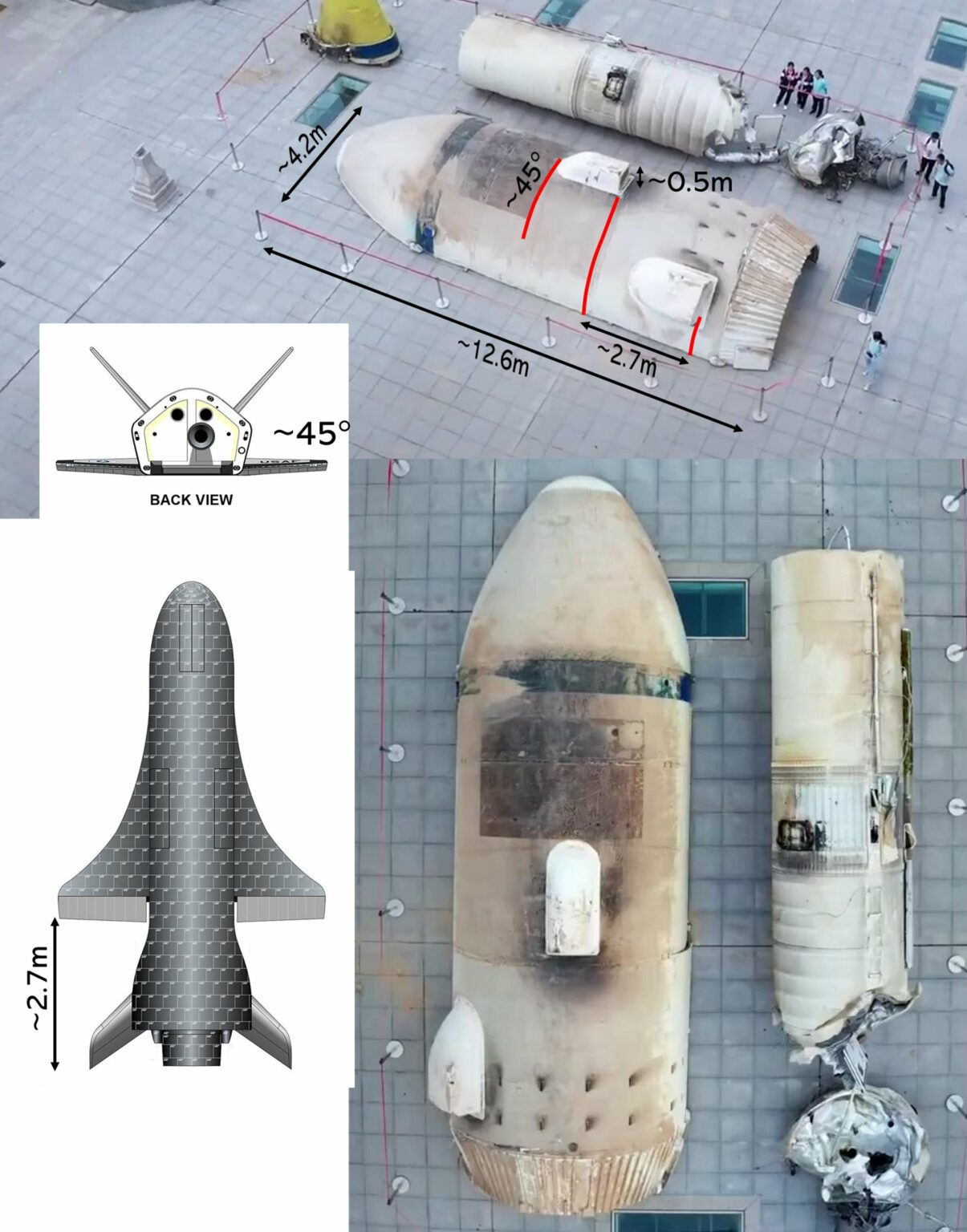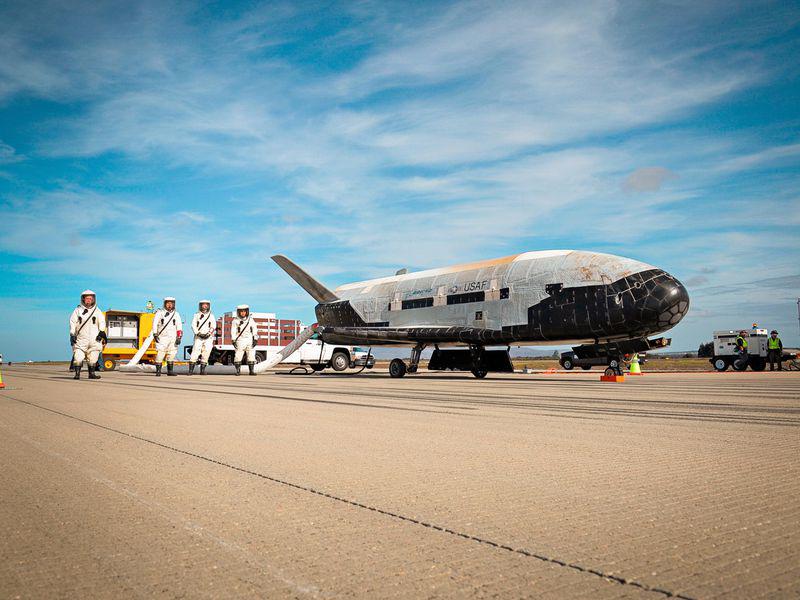The authorities of Henan Province have put on public display the head fairing of the Changzheng-2F rocket, which fell to Earth after a mission to launch a secret reusable spacecraft of the People’s Republic of China into orbit. Its photographs allow us to shed some light on the characteristics of the Chinese device.
The secret Chinese spacecraft was launched on August 4. The Changzheng-2F rocket put it into orbit with a perigee of 346 km, an apogee of 593 km and an inclination of 50°. After the launch, the US Air Force’s 18th Space Control Squadron reported the detection of seven objects moving in the vicinity of the main spacecraft. Some of them are most likely the second stage of Changzheng-2F and accompanying fragments of space debris. At the same time, according to experts, among them there may also be inspection satellites designed to track the behavior of the spacecraft.

On August 15, the Chinese spacecraft flew over the Lobnor base, which was its landing site during the previous mission in 2020. However, according to the 18th Squadron, the device did not take advantage of this opportunity and remained in orbit.
The PRC has traditionally not provided any photos or any technical details of the mechanism of its device. However, a rather unexpected source of information about it was the Changzheng-2F head fairing, displayed on the territory of a school in Henan Province. Judging by the photos, it was modified for the mission and has several protrusions, most likely used to accommodate the wings of the spacecraft.
Chinese copy of the American spaceplane
According to experts, the size of the fairing and the nature of the location of the protrusions allows us to conclude that the Chinese spacecraft is very similar in size and shape to the unmanned orbital aircraft of the US Air Force X-37B. The US military has at least two summer copies of this machine. One of them has been in orbit since May 2020. In total, the two spacecraft spent over 2,700 days in space.

It is worth noting that many observers have previously suggested that the Chinese reusable spacecraft was created under the “influence” of the X-37B. But the images of the Changzheng-2F head fairing were the first visual confirmation of this hypothesis.
According to https://spacenews.com
Follow us on Twitter to get the most interesting space news in time
https://twitter.com/ust_magazine

